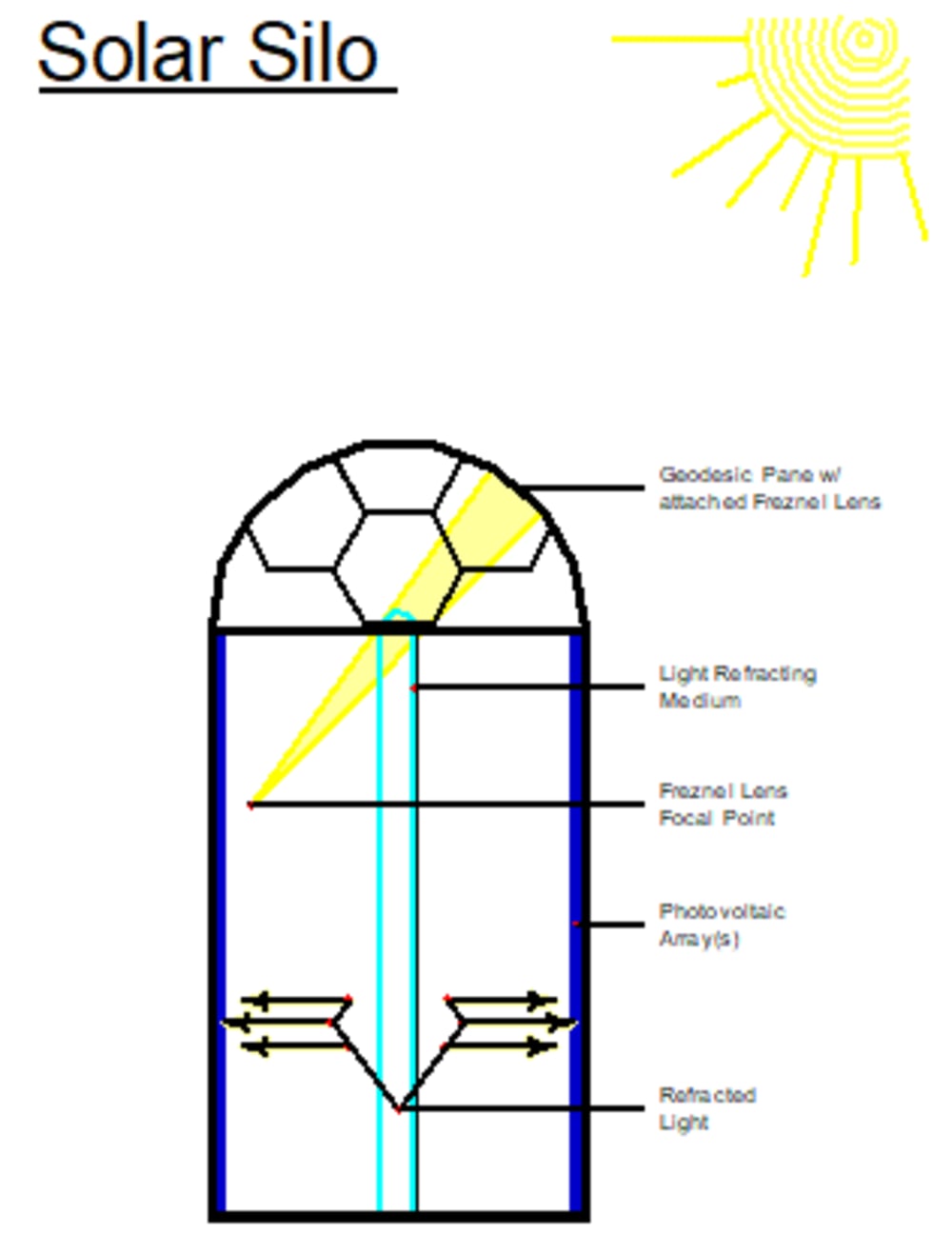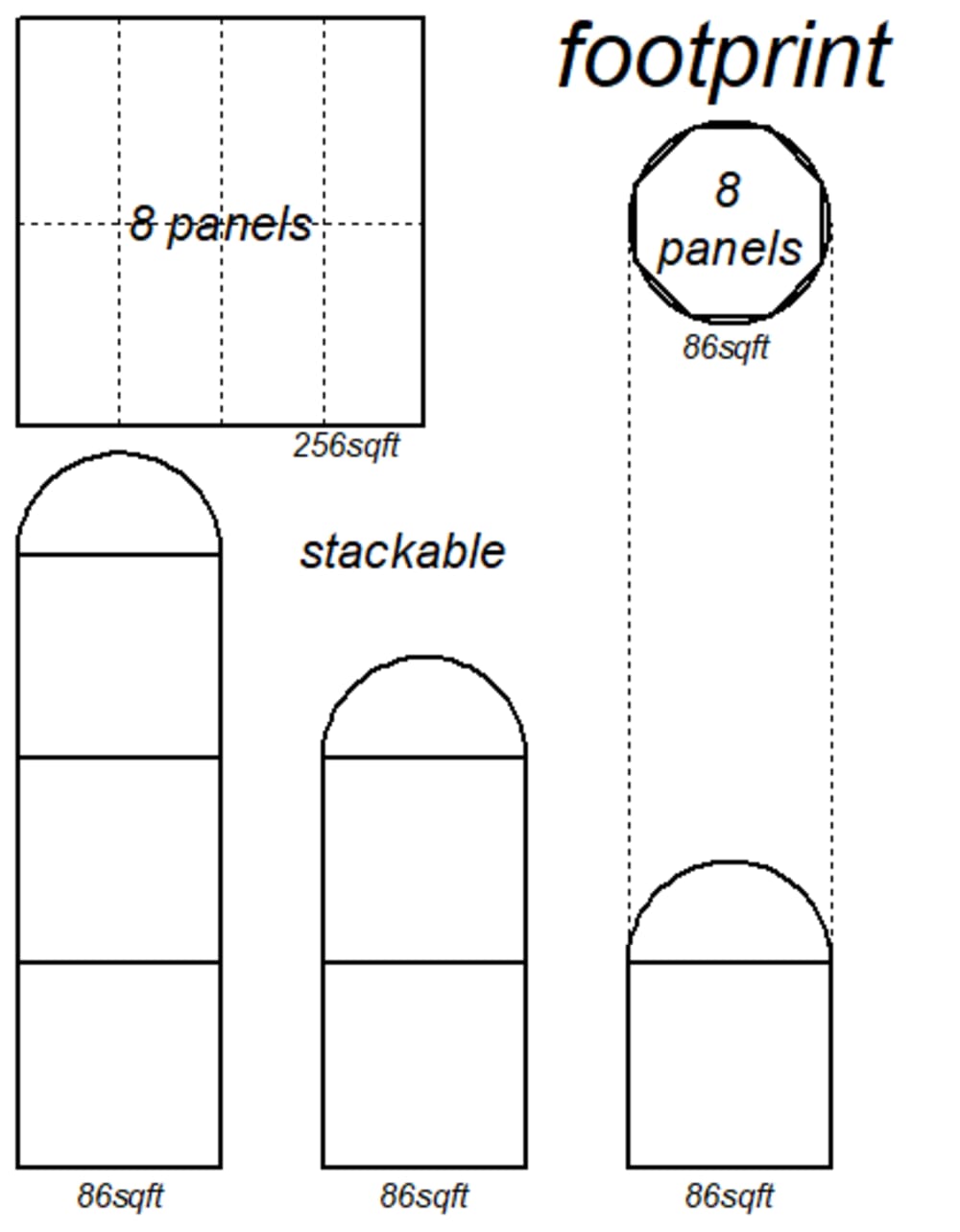The purpose of the solar-silo is to decrease the geological footprint of solar arrays (using existing technologies) while maintaining maximum array output, eliminating solar tracking and reducing maintenance.
A solar-silo is a silo-shaped structure having a clear geodesic domed roof surrounding a solar array positioned around the inside perimeter with a clear cylindrical column containing a light refracting medium in the center of the structure.
Each geodesic segment of the clear geodesic domed roof has an attached Fresnel lens with its focal point passing through the top of the light refracting column (with only the top of the refracting column illuminated by the magnified light of the Fresnel lens). The refraction column consists of a closed clear cylindrical container, with a reflecting inner column at its center, encasing a refracting medium (as illustrated). The solar collector is an upright solar array traversing the inner circumference of the solar-silo.
For full sunlight, throughout the day, flat-panel arrays depend on tracking mechanisms, while the same array without tracking mechanisms only receive full sunlight a small percentage of the day. A solar-silo, through the use of Fresnel lens, maintains full sun on the light refracting column all most the whole of the daylight hours. This use of Fresnel lens eliminates the need for tracking systems and maintaining the cleanliness of clear geodesic domes is drastically less labor intensive than cleaning acres of flat panels.
In example:
A solar array, consisting of eight four-by-eight solar panels (where each solar panel contains one hundred and twenty-eight six-by-six solar cells) has a geographic foot-print of two hundred and fifty-six square feet.
A solar-silo (having the same solar array placed, as described, within) will have a geographic foot-print of eighty-six square feet. That’s a reduction of one hundred and seventy square feet of land usage. Apply that savings to a solar farm using hundreds of acres and the savings in land usage is more than significant. Bear in mind that the solar array within the solar-silo is capable of being stacked, one solar array atop another atop another. Two solar-silos can occupy less square footage than the original solar array. If those two solar-silos had a three-tiered solar array within them, they would increase the solar output of the original land usage by a factor of six
.
Solar-silo usage is applicable in both urban and rural locations and is suitable for either a DIY project for individuals or manufactured for use in large commercial, industrial or national applications. Idealistically the best use of the solar-silo would be for low industrialized nations that lack the natural resources to fulfill their energy needs.
A large number of low industrialize nation lay within the area surrounding the earth’s equator. The weather in this area is consistently hot and sunny, a perfect location for the solar-silo.
With proper structural considerations, the placement of the solar-silo can be of three different applications, atop of the soil, in the ground or water (as illustrated).
Like this entry?
-
About the Entrant
- Name:William Bivens
- Type of entry:individual
- Patent status:none








